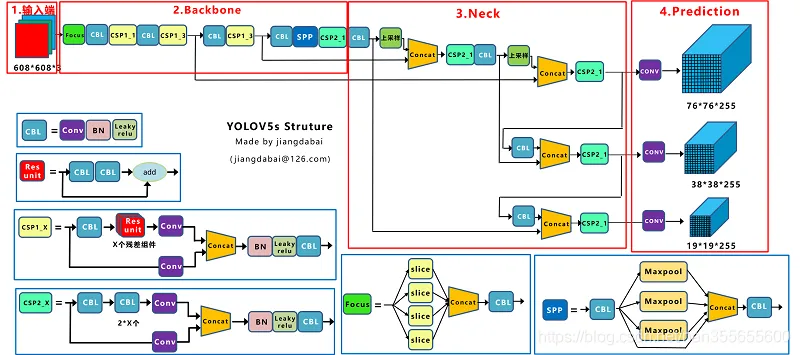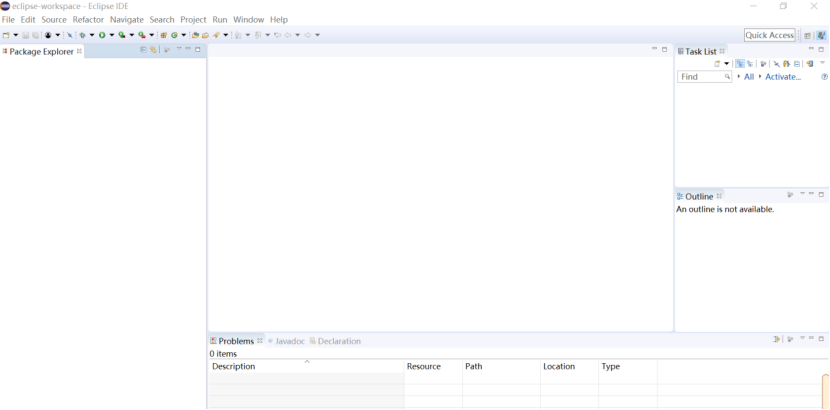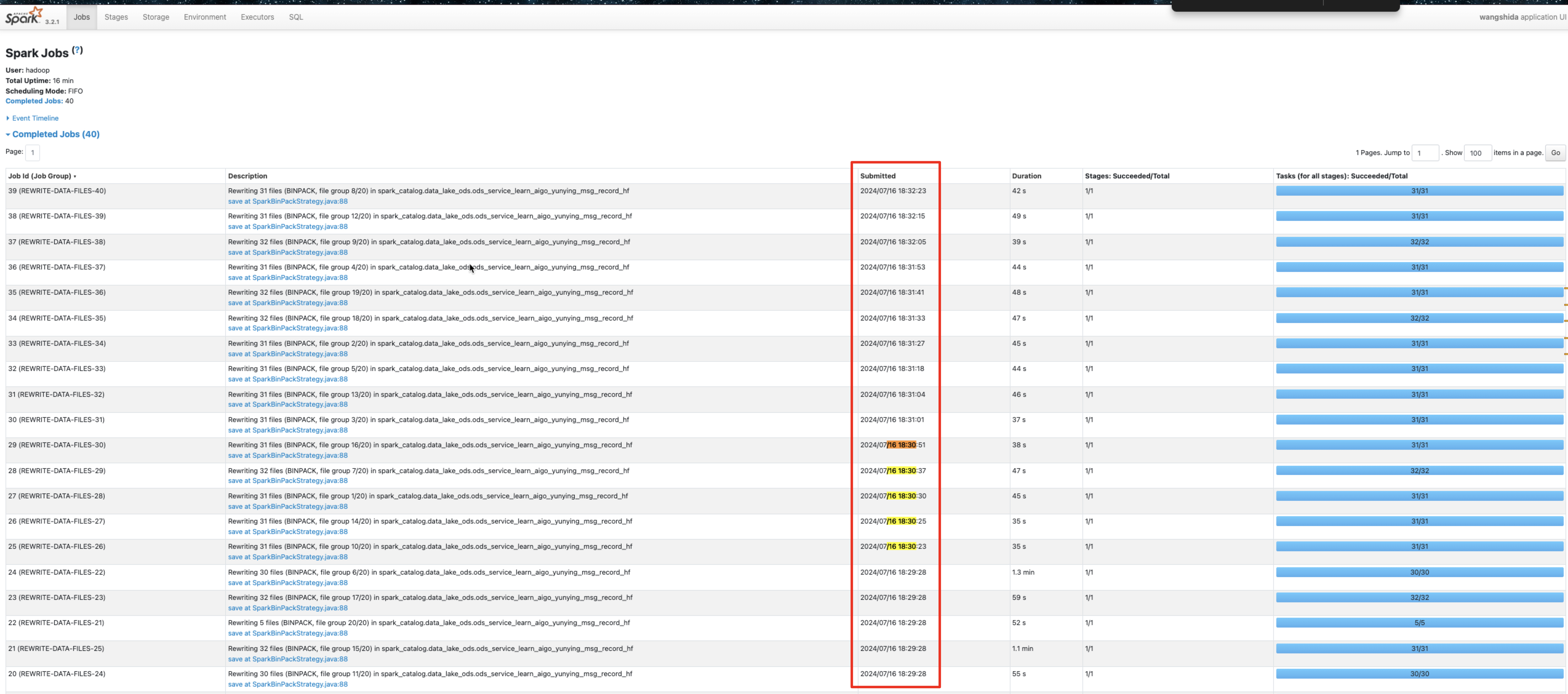
NMS介绍
一张图片经过模型的前向推理之后,会输出非常多的检测结果,如下图Prediction所示:

以一组数据来说明,推理一张图片,模型输入大小为640*640,2个类别,推理的结果产生的预测框计算:
- 20 * 20 * 3
- 40 * 40 * 3
- 80 * 80 * 3
总计:25200
参数解释:
- 20、40、80 代表生成的不同预测网格尺度,yolov5会输出3种尺度的预测结果,分别大尺度
20*20,中尺度40*40,小尺度80*80 - 3 代表每一个网格有3个预测框bounding box
所以要从这25200个数据中筛选出最好的两个结果,因为检查两个类别。筛选的过程就是NMS。
NMS: 非极大值抑制(Non-Maximum Suppression),
功能:从大量的预测结果中筛选出得分最高的结果。
思路:NMS的主要思路是通过计算目标框之间的重叠度(即IOU,交并比)来剔除非最佳结果。
代码实现:
YOLOv5的NMS代码使用了一个循环来遍历所有的预测框,并进行判断和筛选。
- 通过设定置信度阈值和IOU阈值,将预测框中置信度低于阈值的框过滤掉,只保留置信度高的框。
- 对剩下的框按照置信度进行降序排序,确保置信度高的框排在前面。
- 从置信度最高的框开始,计算它和剩下所有预测框的IOU。剩下的预测框中IOU低于设定的IOU阈值保留预测框。
- 重复上述步骤,直到遍历完所有的预测框,并得到最终筛选出来的目标框。
获取参数
传入的 prediction 为预测框,形状为:[29, 27783, 7] ,代表着推理的图片一共29张,每一张图片预测结果有27783个预测框,7代表预测结果x,y,w,h,confidence, cls1, cls2。
首先获取参数并校验参数。conf_thres、iou_thres都是影响剩余预测框的参数,校验其参数都在0-1之间。然后获取batch_size、类别个数,最后判断预测结果中大于设定阈值的框,得到一个布尔张量。
def non_max_suppression(prediction,conf_thres=0.25,iou_thres=0.45,classes=None,agnostic=False,multi_label=False,labels=(),max_det=300,nm=0, # number of masks
):"""Non-Maximum Suppression (NMS) on inference results to reject overlapping detectionsReturns:list of detections, on (n,6) tensor per image [xyxy, conf, cls]""""""Pdb) pp prediction.shapetorch.Size([29, 27783, 7])"""# Checksassert 0 <= conf_thres <= 1, f'Invalid Confidence threshold {conf_thres}, valid values are between 0.0 and 1.0'assert 0 <= iou_thres <= 1, f'Invalid IoU {iou_thres}, valid values are between 0.0 and 1.0'if isinstance(prediction, (list, tuple)): # YOLOv5 model in validation model, output = (inference_out, loss_out)prediction = prediction[0] # select only inference output"""(Pdb) bs29(Pdb) nc2(Pdb) xc.shapetorch.Size([29, 27783])"""bs = prediction.shape[0] # batch sizenc = prediction.shape[2] - nm - 5 # number of classesxc = prediction[..., 4] > conf_thres # candidates
设定参数上限
设定一些nms中参数上线,主要用于在超过范围时限制。
- max_wh: 图像最大的宽高
- max_nms: 进入筛选预测框的上线
- time_limit: 时间限制
- multi_label: 多标签标识
- merge:merge-nms标识
max_wh = 7680 # (pixels) maximum box width and height
max_nms = 30000 # maximum number of boxes into torchvision.ops.nms()
time_limit = 0.5 + 0.05 * bs # seconds to quit after
redundant = True # require redundant detections
multi_label &= nc > 1 # multiple labels per box (adds 0.5ms/img)
merge = False # use merge-NMS
过滤出大于阈值的预测框
构建结果张量output,每一行由6个参数构成,分别是x,y,w,h,confidence,cls。这个就是模型推理的最后结果。
循环遍历prediction,xi是从0开始的下标,x是27783个预测结果。xc[xi] 获取阈值筛选的正负结果,x[xc[xi]] 通过布尔数组获取其中为True的结果,也就是置信度大于阈值的结果。
t = time.time()
mi = 5 + nc # mask start index
output = [torch.zeros((0, 6 + nm), device=prediction.device)] * bs
for xi, x in enumerate(prediction): # image index, image inference# Apply constraints# x[((x[..., 2:4] < min_wh) | (x[..., 2:4] > max_wh)).any(1), 4] = 0 # width-height"""(Pdb) xc.shapetorch.Size([29, 27783])(Pdb) xc[0]tensor([False, False, False, ..., True, True, True], device='cuda:0')\(Pdb) xc[0].shapetorch.Size([27783])(Pdb) x.shapetorch.Size([27783, 7])"""x = x[xc[xi]] # confidence
判断结果中没有大于阈值的结果,则跳过下面的流程
# If none remain process next image
if not x.shape[0]:continue
置信度处理
置信度在模型推理的结果上还有进一步的处理,将置信度 * 类别得分才是真正的confidence。
x代表的是预测结果,每一行的数据分别是:x, y, w, h, conf, cls。
x[:, 5:] 获取所有类别得分,x[:, 4:5] 获取置信度得分。两者乘积才是最终的confidence。
# Compute conf
x[:, 5:] *= x[:, 4:5] # conf = obj_conf * cls_conf
获取结果中的预测框位置信息,并将位置信息从xywh转换成x1y1x2y2的格式。
"""
(Pdb) pp box[0]
tensor([-5.80469, -2.92188, 19.59375, 25.15625], device='cuda:0', dtype=torch.float16)
"""
box = xywh2xyxy(x[:, :4]) # center_x, center_y, width, height) to (x1, y1, x2, y2)
mask = x[:, mi:] # zero columns if no masks
准备NMS计算的结构
在类别大于1的情况下,multi_label 为真,首先判断上一步confidence的结果中大于阈值的数据,并获取保留结果的预测框坐标轴i和j。 x为二维向量,i 代表 大于阈值的预测框所在的行,j代表所在的列。然后将位置信息、confidence、类别信息连接成新的向量。其中:
- box[i]:xywh
- x[i, 5 + j, None]: 获得了所有大于阈值预测框的confidence
- j[:, None]: 类别ID
# Detections matrix nx6 (xyxy, conf, cls)
if multi_label:"""x[:, 5:mi] > conf_thres: 大于阈值的结果i:bbox的横坐标j: bbox的纵坐标box[i]:xywhx[i, 5 + j, None]: 获得了所有大于阈值的bbox结果j[:, None]: 类别ID"""i, j = (x[:, 5:mi] > conf_thres).nonzero(as_tuple=False).Tx = torch.cat((box[i], x[i, 5 + j, None], j[:, None].float(), mask[i]), 1)"""(Pdb) pp x.shapetorch.Size([17039, 6])"""else: # best class onlyconf, j = x[:, 5:mi].max(1, keepdim=True)x = torch.cat((box, conf, j.float(), mask), 1)[conf.view(-1) > conf_thres]# Filter by class
if classes is not None:x = x[(x[:, 5:6] == torch.tensor(classes, device=x.device)).any(1)]
准备boxes 和 scores
对置信度排序,获取从大到小的预测框的下标,并过滤超出范围的预测框。对多类别中不同类别的预测框做一个偏移操作,防止不同类别的预测框互相影响。最后得到预测框坐标 boxes 和 置信度 scores。
# Check shape
n = x.shape[0] # number of boxes
if not n: # no boxescontinue# 对置信度排序,并去掉超出范围的结果
x = x[x[:, 4].argsort(descending=True)[:max_nms]] # sort by confidence and remove excess boxes# Batched NMS
# 这行代码是多类别中应用NMS
# 多类别NMS(非极大值抑制)的处理策略是为了让每个类都能独立执行NMS,在所有的边框上添加一个偏移量。
# 偏移量仅取决于类的ID(也就是x[:, 5:6]),并且足够大,以便来自不同类的框不会重叠。c = x[:, 5:6] * (0 if agnostic else max_wh) # classes# 获取boxes 和 scores
boxes, scores = x[:, :4] + c, x[:, 4] # boxes (offset by class), scores
"""
(Pdb) pp boxes.shape
torch.Size([17039, 4])
(Pdb) pp scores.shape
torch.Size([17039])
"""
计算结果
nms 筛选。nms筛选使用的是torchvision的工具,传入预测框位置,置信度,iou阈值,得到一个一维张量。
# 遍历score,通过IOU 筛选bbox。返回最终的bbox的index
i = torchvision.ops.nms(boxes, scores, iou_thres) # NMS
"""
(Pdb) i.shape
torch.Size([300])
"""torchvision.ops.nms 可以用纯python的操作代替。如下代码就是完成nms筛选的过程。主要流程:
- 传入预测框
- 计算所有预测框的面积
- 对置信度从大到小排序
- 循环筛选
- 保存预测框第一个值,也就是最大置信度的值
- 计算该值和剩余所有预测框的IOU,保存小于iou_thresh的预测框,大于的丢弃
- 循环以上操作,直到所有的预测框都筛选完
# @jit(nopython=True)
def py_cpu_nms(dets, scores, conf_thresh=0.1, iou_thresh=0.5):"""Pure Python NMS baseline."""x1 = dets[:, 0]y1 = dets[:, 1]x2 = dets[:, 2]y2 = dets[:, 3]"""计算出所有框的面积"""areas = (x2 - x1 + 1) * (y2 - y1 + 1)# 对置信度从小到大的排序,返回排序之后的下标的倒排,也就是从大到小的下标。order = scores.argsort()[::-1]# 创建数组保存最终结果,bbox的下标keep = []while order.size > 0:# 选择当前最大置信度的下标,第一循环为最大的i = order[0]keep.append(i)# 计算当前bbox和剩下所有bbox的IOUxx1 = np.maximum(x1[i], x1[order[1:]])yy1 = np.maximum(y1[i], y1[order[1:]])xx2 = np.minimum(x2[i], x2[order[1:]])yy2 = np.minimum(y2[i], y2[order[1:]])w = np.maximum(0.0, xx2 - xx1 + 1)h = np.maximum(0.0, yy2 - yy1 + 1)inter = w * hovr = inter / (areas[i] + areas[order[1:]] - inter)# 筛选出IOU小于某一个阈值的bbox,也就是说过滤掉所有IOU大于阈值的bboxinds = np.where(ovr <= iou_thresh)[0]# 重置order数组,丢弃所有和当前bbox的IOU大于阈值的bboxorder = order[inds + 1]# 重复当前动作,每一次添加一个最大置信度的bbox到keep,直到所有的数组都遍历完成。return keep
返回最终结果
收尾工作中获取预测值,打印处理时间等
i = i[:max_det] # limit detections
if merge and (1 < n < 3E3): # Merge NMS (boxes merged using weighted mean)# update boxes as boxes(i,4) = weights(i,n) * boxes(n,4)iou = box_iou(boxes[i], boxes) > iou_thres # iou matrixweights = iou * scores[None] # box weightsx[i, :4] = torch.mm(weights, x[:, :4]).float() / weights.sum(1, keepdim=True) # merged boxesif redundant:i = i[iou.sum(1) > 1] # require redundancy# 获取某一个网格的最终结果
output[xi] = x[i]
"""
(Pdb) p output[xi].shape
torch.Size([300, 6])
"""if mps:output[xi] = output[xi].to(device)
if (time.time() - t) > time_limit:LOGGER.warning(f'WARNING ⚠️ NMS time limit {time_limit:.3f}s exceeded')break # time limit exceeded
最终的输出结果是:
(Pdb) len(output)
29
(Pdb) output[0][0]
tensor([5.56500e+02, 1.74750e+02, 6.34500e+02, 2.14250e+02, 7.48901e-02, 0.00000e+00], device='cuda:0')
输出分别代表:x1, y1, x2, y2, confidence, cls_index。
| x1 | y1 | x2 | y2 | 概率 | 类别 |
|---|---|---|---|---|---|
| 556 | 174 | 634 | 214 | 0.069 | 0 |
参考:yolov5 nms 源码理解_nc = prediction.shape[2] - 5 # number of classes-CSDN博客
附录完整注释代码
def non_max_suppression(prediction,conf_thres=0.25,iou_thres=0.45,classes=None,agnostic=False,multi_label=False,labels=(),max_det=300,nm=0, # number of masks
):"""Non-Maximum Suppression (NMS) on inference results to reject overlapping detectionsReturns:list of detections, on (n,6) tensor per image [xyxy, conf, cls]"""# Checksassert 0 <= conf_thres <= 1, f'Invalid Confidence threshold {conf_thres}, valid values are between 0.0 and 1.0'assert 0 <= iou_thres <= 1, f'Invalid IoU {iou_thres}, valid values are between 0.0 and 1.0'if isinstance(prediction, (list, tuple)): # YOLOv5 model in validation model, output = (inference_out, loss_out)prediction = prediction[0] # select only inference output"""Pdb) pp prediction.shapetorch.Size([29, 27783, 7])"""device = prediction.devicemps = 'mps' in device.type # Apple MPSif mps: # MPS not fully supported yet, convert tensors to CPU before NMSprediction = prediction.cpu()"""(Pdb) bs29(Pdb) nc2(Pdb) xc.shapetorch.Size([29, 27783])"""bs = prediction.shape[0] # batch sizenc = prediction.shape[2] - nm - 5 # number of classesxc = prediction[..., 4] > conf_thres # candidatesbreakpoint()# Settings# min_wh = 2 # (pixels) minimum box width and heightmax_wh = 7680 # (pixels) maximum box width and heightmax_nms = 30000 # maximum number of boxes into torchvision.ops.nms()time_limit = 0.5 + 0.05 * bs # seconds to quit afterredundant = True # require redundant detectionsmulti_label &= nc > 1 # multiple labels per box (adds 0.5ms/img)merge = False # use merge-NMSt = time.time()mi = 5 + nc # mask start indexoutput = [torch.zeros((0, 6 + nm), device=prediction.device)] * bsfor xi, x in enumerate(prediction): # image index, image inference# Apply constraints# x[((x[..., 2:4] < min_wh) | (x[..., 2:4] > max_wh)).any(1), 4] = 0 # width-height"""(Pdb) xc.shapetorch.Size([29, 27783])(Pdb) xc[0]tensor([False, False, False, ..., True, True, True], device='cuda:0')\(Pdb) xc[0].shapetorch.Size([27783])(Pdb) x.shapetorch.Size([27783, 7])"""x = x[xc[xi]] # confidence"""(Pdb) pp x.shapetorch.Size([17788, 7])"""# Cat apriori labels if autolabellingif labels and len(labels[xi]):lb = labels[xi]v = torch.zeros((len(lb), nc + nm + 5), device=x.device)v[:, :4] = lb[:, 1:5] # boxv[:, 4] = 1.0 # confv[range(len(lb)), lb[:, 0].long() + 5] = 1.0 # clsx = torch.cat((x, v), 0)# If none remain process next imageif not x.shape[0]:continue"""(Pdb) x[0]tensor([6.89062e+00, 1.11172e+01, 2.53906e+01, 2.80781e+01, 1.03188e-03, 1.96777e-01, 2.99805e-01], device='cuda:0', dtype=torch.float16)(Pdb) n> /home/lijinkui/Documents/code/yolov5/utils/general.py(922)non_max_suppression()-> box = xywh2xyxy(x[:, :4]) # center_x, center_y, width, height) to (x1, y1, x2, y2)(Pdb) x[0]tensor([6.89062e+00, 1.11172e+01, 2.53906e+01, 2.80781e+01, 1.03188e-03, 2.03013e-04, 3.09467e-04], device='cuda:0', dtype=torch.float16)"""# Compute confx[:, 5:] *= x[:, 4:5] # conf = obj_conf * cls_conf# Box/Mask"""(Pdb) pp box[0]tensor([-5.80469, -2.92188, 19.59375, 25.15625], device='cuda:0', dtype=torch.float16)"""box = xywh2xyxy(x[:, :4]) # center_x, center_y, width, height) to (x1, y1, x2, y2)mask = x[:, mi:] # zero columns if no masks# Detections matrix nx6 (xyxy, conf, cls)if multi_label:"""x[:, 5:mi] > conf_thres: 大于阈值的结果i:bbox的横坐标j: bbox的纵坐标box[i]:xywhx[i, 5 + j, None]: 获得了所有大于阈值的bbox结果j[:, None]: 类别ID"""i, j = (x[:, 5:mi] > conf_thres).nonzero(as_tuple=False).Tx = torch.cat((box[i], x[i, 5 + j, None], j[:, None].float(), mask[i]), 1)"""(Pdb) pp x.shapetorch.Size([17039, 6])"""else: # best class onlyconf, j = x[:, 5:mi].max(1, keepdim=True)x = torch.cat((box, conf, j.float(), mask), 1)[conf.view(-1) > conf_thres]# Filter by classif classes is not None:x = x[(x[:, 5:6] == torch.tensor(classes, device=x.device)).any(1)]# Apply finite constraint# if not torch.isfinite(x).all():# x = x[torch.isfinite(x).all(1)]# Check shapen = x.shape[0] # number of boxesif not n: # no boxescontinue# 对置信度排序,并去掉超出范围的结果x = x[x[:, 4].argsort(descending=True)[:max_nms]] # sort by confidence and remove excess boxes# Batched NMSc = x[:, 5:6] * (0 if agnostic else max_wh) # classes# 获取boxes 和 scoresboxes, scores = x[:, :4] + c, x[:, 4] # boxes (offset by class), scores"""(Pdb) pp boxes.shapetorch.Size([17039, 4])(Pdb) pp scores.shapetorch.Size([17039])"""# 遍历score,通过IOU 筛选bbox。返回最终的bbox的indexi = torchvision.ops.nms(boxes, scores, iou_thres) # NMS"""(Pdb) i.shapetorch.Size([300])"""i = i[:max_det] # limit detectionsif merge and (1 < n < 3E3): # Merge NMS (boxes merged using weighted mean)# update boxes as boxes(i,4) = weights(i,n) * boxes(n,4)iou = box_iou(boxes[i], boxes) > iou_thres # iou matrixweights = iou * scores[None] # box weightsx[i, :4] = torch.mm(weights, x[:, :4]).float() / weights.sum(1, keepdim=True) # merged boxesif redundant:i = i[iou.sum(1) > 1] # require redundancy# 获取某一个网格的最终结果output[xi] = x[i]"""(Pdb) p output[xi].shapetorch.Size([300, 6])"""if mps:output[xi] = output[xi].to(device)if (time.time() - t) > time_limit:LOGGER.warning(f'WARNING ⚠️ NMS time limit {time_limit:.3f}s exceeded')break # time limit exceededreturn output











